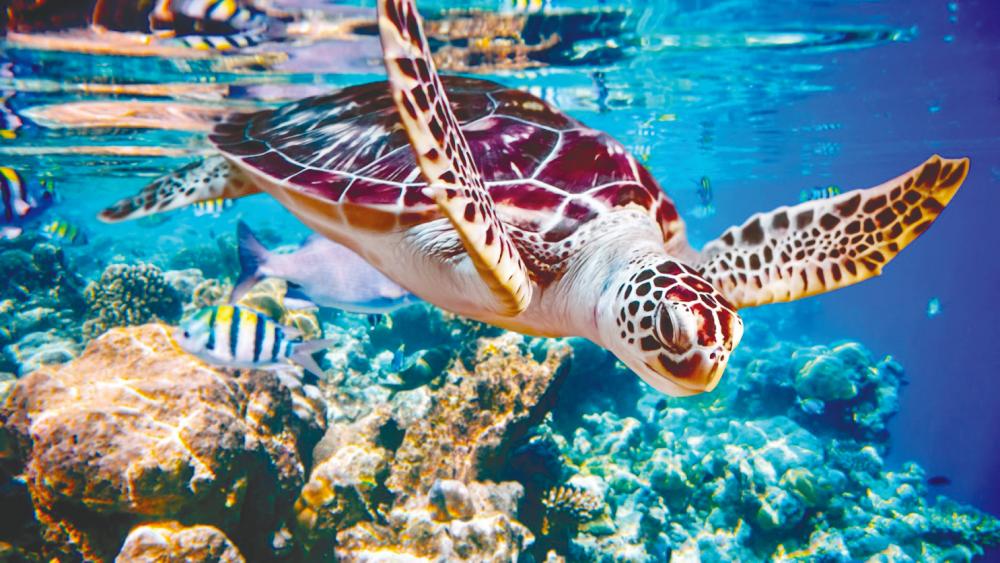THE seas neighbouring Malaysia provide a major source of food, energy and livelihood for our ecosystem. The Malaysian marine environment is renowned for its biodiversity and unique ecosystems, which include mangroves, coral reefs and seagrass, and its natural resources contribute significantly to sustainable development.
The ocean has been a main component of the country’s socioeconomic development since it has historically served as a foundation for global commerce and commercial activities, particularly shipping, tourism, fisheries and offshore oil and gas. However, human development has placed a severe strain on the marine environment’s resilience and resources.
Increased pollution and irresponsible coastal development are among the concerns contributing to biodiversity loss and changes in the ecosystem, such as food security and ecological function.
Sustainable oceans for human well-being and increased awareness of ocean resilience has increased since the United Nations General Assembly established the 17 Sustainable Development Goals (SDG) in September 2015.
The SDG, commonly known as Agenda 2030, are a set of 17 targets on environmental sustainability, social inclusion, economic development, peace, justice, good governance and collaboration, to address the world’s primary concerns in the 21st century.
As a United Nations member state, Malaysia has demonstrated her commitment to having a sustainable ocean by 2030 by incorporating SDG14 (life below water) into the 11th Malaysia Plan (MP) for the 2016-2020 term.
SDG 14 has 10 objectives that focus primarily on ocean life and its resources. Malaysia, in line with the international community, has agreed on each target for ocean conservation and sustainable development in order to keep the ecosystems healthy and productive.
As a result, it is critical to conserve, restore and safeguard the diversity and vital functioning of our marine ecosystems that will contribute to the achievement of SDG 14. The art of ocean health and resilience is inextricably linked to blue economy, which strives to manage and conserve marine ecosystems sustainably.
The notion of blue economy evolved from the concept of green growth in response to growing concerns about the considerable harm being done to our ocean ecosystems because of activities such as overfishing, habitat destruction, marine pollution, ocean acidification and climate change.
The idea of a blue economy has grown popular over the last decade, since it underlines the need to capitalise on the economic potential of oceans, while preserving them for future generations. This is defined by the sustainable use of marine resources for economic growth while also protecting and promoting the health of the oceans in the SDG.
The blue economy originated during the 2012 United Nations Conference on Sustainable Development in Rio de Janeiro. It is primarily concerned with the effective and equitable use of resources, and places a premium on sustainable development.
According to a recent study by the United Nations Conference on Trade and Development in 2020, the blue economy accounts for around 3.5% – 7% of global gross domestic product (GDP), which is valued at US$1.5 trillion (RM6.29 trillion) and is predicted to reach US$3 trillion by 2030. Thus, it is necessary to identify the value of ocean resources in order to maximise economic growth.
The blue economy strives to strike a balance between long-term economic advantages and ocean health. Appropriate use of marine resources has garnered global attention in recent years. Malaysia will gain from the blue economy in terms of job generation and the country’s growth.
In fact, it has been projected that the blue economy will contribute up to 23% of Malaysia’s national GDP.
The blue economy has been officially reported to be a work in progress in Malaysia and is on track to becoming a pillar of socioeconomic growth. Hence, the blue economy idea was incorporated into the 12th Malaysia Plan, with input from relevant ministries and agencies.
In light of the critical role played by the blue economy in national growth, the government must adopt a strategy to manage its development. A shift towards blue economy would maximise the potential of marine-based sectors, which can help employment, while decreasing environmental degradation.
Thus, the nexus between a blue economy and SDG 14 is crucial for supporting socioeconomic progress and ensuring a sustainable ocean by 2030.
The writer is a senior lecturer at the Faculty of Maritime Studies,
Universiti Malaysia Terengganu. Comments: letters@thesundaily.com













